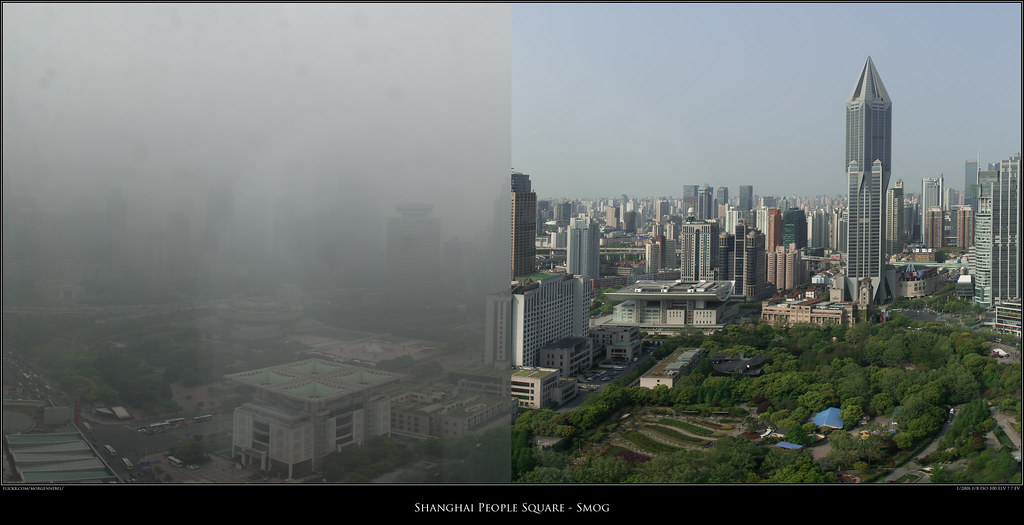Image may be NSFW.
Clik here to view.
This is what smog looks like from outer space. This true color VIIRS image was captured by the NASA/NOAA Suomi NPP satellite on October 22, 2013 and shows the deteriorating air quality situation across China. This smog cloud hovering over southeast China is roughly one-third the size of Germany. Last Friday it got so bad that flights were delayed or cancelled. In Shanghai, local authorities urged residents to stay indoors, asked factories to either cut or halt production, and closed several highways to reduce traffic emissions. In other cities schools have been suspended. The WHO recommends no more than 20 PM2.5 particulate matter per day. Current readings in China are beyond 500.
Real-time satellite imagery detects these particulates — tiny bits of matter suspended in the atmosphere as aerosols that are part of what makes up smog. When the smog is so heavy, these clouds of air pollution can be easily seen from Space. This has two reasons. First, smog is optically thicker in the visual range and thus reduces the contrast of objects below it, or fades them away completely. Second, unlike typical clouds, smog is not white and can have brown tones.
The Chinese government releases public readings, and the US Department of State tweets pollution levels for Beijing, Chengdu, Guangzhou, Shanghai and Shenyang.
Industrial pollution, including the burning of coal for energy and heating, releases tiny particles to the atmosphere. Factors such as unfavorable wind and weather patterns, the surrounding mountain's orthography, and the cold atmosphere suppress a layer of air and cause these particles to accumulate into thick, heavy smog.
The photo on the left is Shanghai with heavy smog, while the one on the right was snapped three days later after wind and rain cleared the air.

